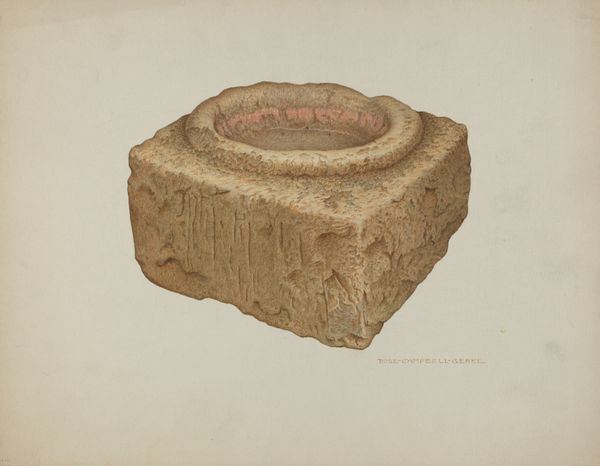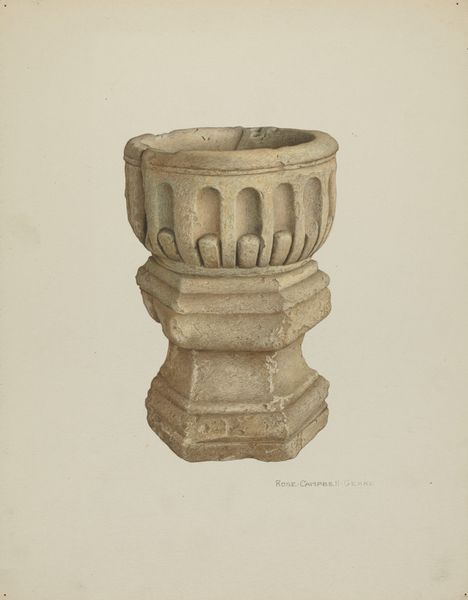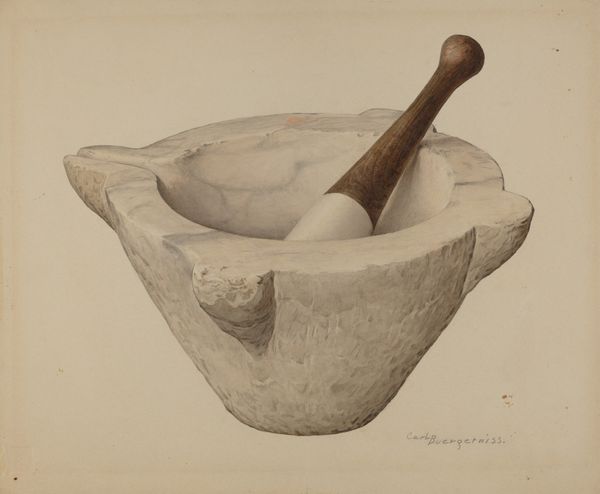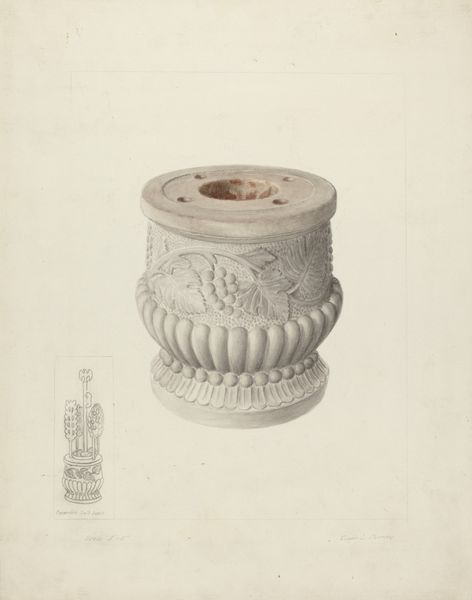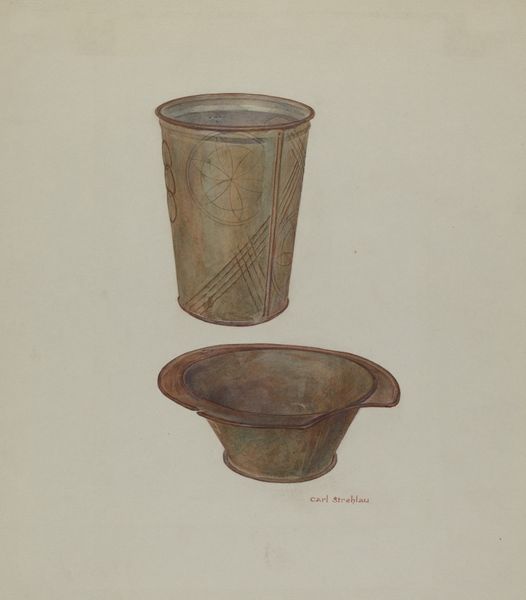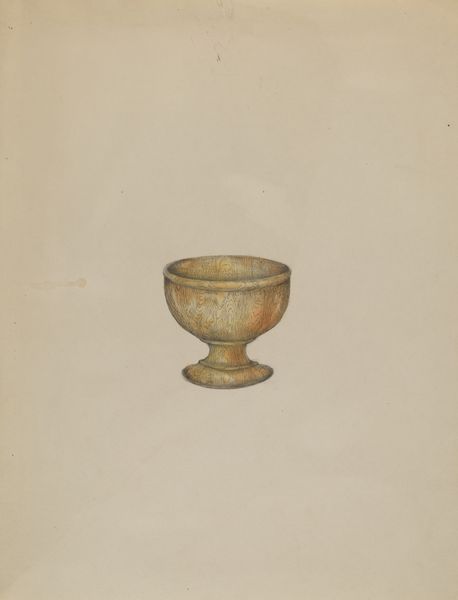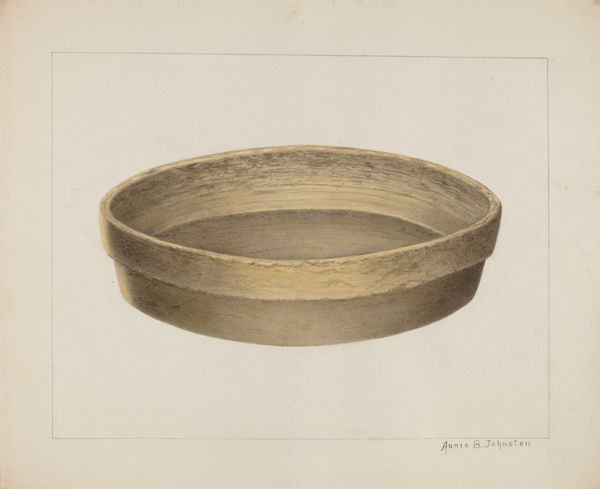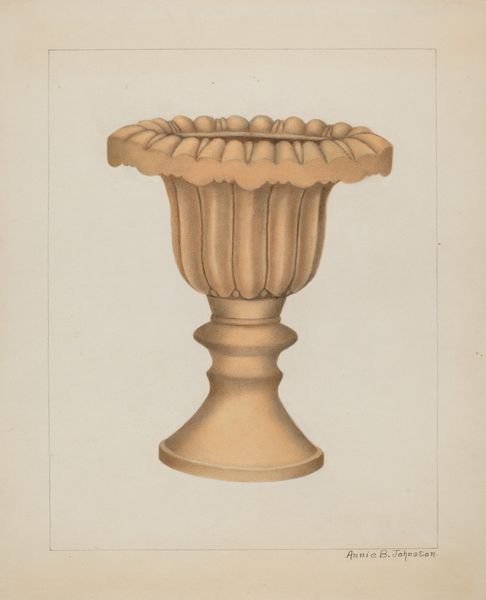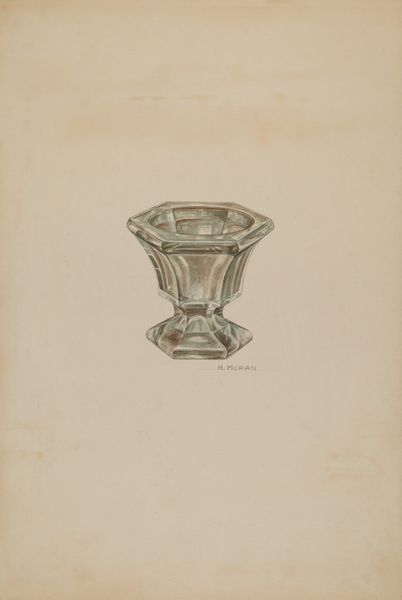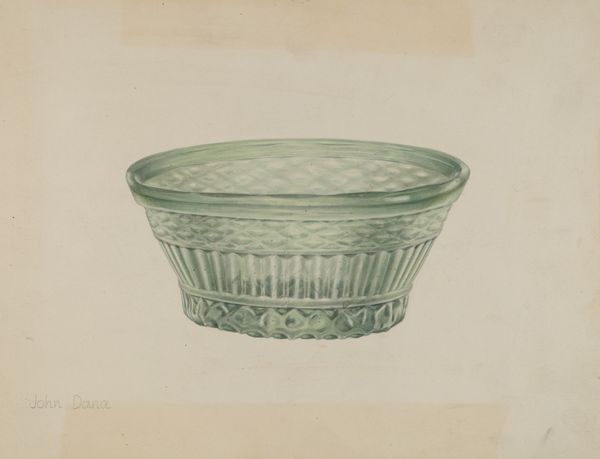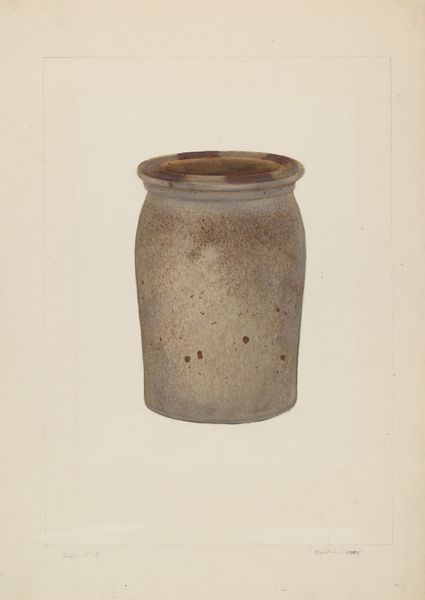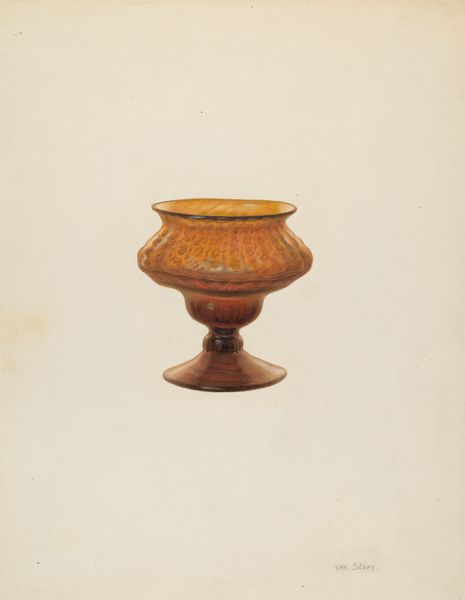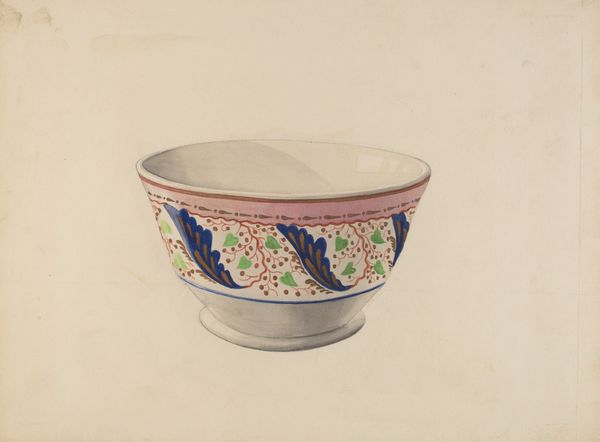
drawing, paper, watercolor, pencil
#
drawing
#
paper
#
watercolor
#
pencil drawing
#
pencil
#
watercolour illustration
#
watercolor
Dimensions: overall: 27.9 x 35.4 cm (11 x 13 15/16 in.) Original IAD Object: Diam. of basin 15"; entire length, 29"; 9"high
Copyright: National Gallery of Art: CC0 1.0
Curator: Rose Campbell-Gerke's "Carved Stone Was Basin," created around 1939, presents us with a beautifully rendered watercolor and pencil drawing. Editor: It exudes a certain stillness. The neutral tones, the straightforward composition…it feels almost archaeological, a quiet study of a utilitarian object raised to the level of art. Curator: Precisely. Campbell-Gerke, working within the context of the 1930s, engaged with a prevalent trend to document American material culture. There was a conscious effort to preserve and valorize objects linked to earlier periods in America. The rendering possesses the quiet reverence typical of WPA-era artistic endeavors. Editor: So, it's not just about the stone basin itself, but what that object represents—access to cleanliness perhaps, civic order, even survival, during times of drought and hardship, when hygiene became particularly crucial, especially for women. Curator: Absolutely. Think about the historical context; hygiene disparities disproportionately affect marginalized communities, especially women, and this access becomes intrinsically political. Campbell-Gerke's choice is not accidental, it implicitly raises questions about social justice. Editor: But on the surface, the presentation is so…serene. Almost deceptively simple. We don't immediately register these layers of social commentary, because, as an artwork, it seemingly presents the object without obvious political fanfare. It's as if the quiet dignity of the object, is itself, a commentary on power, the act of recording such common items. Curator: Indeed, Campbell-Gerke is, in a way, offering us an implicit social commentary. Her careful attention elevates what many would have considered ordinary, emphasizing the significance of accessible sanitation and water as crucial social indicators and as political rights. Editor: Well, looking at it through that lens definitely adds a lot of resonance. What seemed at first glance a straightforward drawing opens up to reflect deeper cultural currents of its time. Curator: It reveals how even seemingly benign objects can reflect social conditions. Editor: It causes you to rethink the political value of the object that becomes part of the imagery, the social agency, and that kind of legacy on history.
Comments
No comments
Be the first to comment and join the conversation on the ultimate creative platform.
